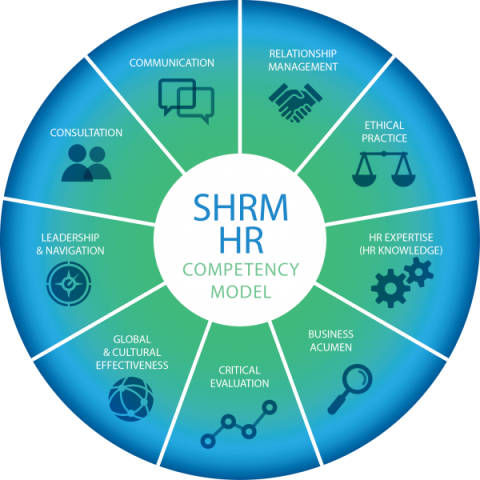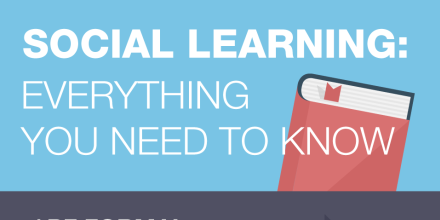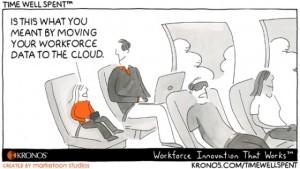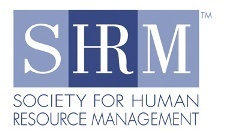Sharlyn J. Lauby's Blog, page 172
August 20, 2015
SHRM Certification: Why Should #HR Pros Pay Attention
Competency is defined as an ability or skill. Every profession has competencies. And we want competencies; they are the things that make us successful. You could say that jobs are made up of tasks (the actual things we do) and competencies (the skills we need to do them).
A couple of years ago, the Society for Human Resource Management (SHRM) created a competency model for human resources pros. Since then, SHRM has developed a certification that aligns with the competency model.
In my role as a SHRM special expertise panel member and as one of the initial item writers for the SHRM certification exam, I had the opportunity to hear an update about the certification program during this year’s SHRM Annual Conference in Las Vegas. I thought the update was well-presented and very relevant, so I asked Alex Alonso, PhD, vice president of the certification team, if he would share a few details with you. I’m delighted he said yes.
Alex, for those readers who aren’t aware, what is the SHRM certification and what does it represent?
[Alex] SHRM certification is the world’s first competency-based certification for early-career and senior HR professionals. These certifications are based upon SHRM’s rigorously-validated Competency Model comprised of the knowledge and behavior needed to succeed in human resources management.
We both know there are other human resources related certifications. What makes the SHRM certification different and valuable?
[Alex] I’m asked often what makes these credentials different. The answer is they focus on both knowledge and behaviors. The exams are designed to assess two things:
The first part of that test is designed to assess knowledge through a written exam. The knowledge of HR held by examinees and an examinee’s ability to address difficult situations common to the HR profession. This is a lot like the drivers’ license tests we all know and love.
The second part is a road test and this is designed to see how proficiently we behave as drivers. This results in a job-relevant exam, meaning examinees will encounter questions that reflect their day-to-day work.
Our examinees keep telling us about the job relevance factor and what it means for them as they sit for our exams. SHRM-CP and SHRM-SCP exams are designed to assess both.
Let’s talk specifically about those HR pros who are trying to decide between a PHR / SPHR and the SHRM-CP / SHRM-SCP. It’s a common comparison. How does someone evaluate their options?
[Alex] Certainly, we recognize the value of certification and what it means to earn one. For those considering HR certification, I would advise seeking a credential that demonstrates two things:
A strong research foundation based upon competencies linked to job performance and job success.
The ability to assess both knowledge AND behaviors leading to success.
 When considering both of these factors, I advise all my colleagues to consider what an employer is looking for when thinking about HR professionals. In fact, roughly 15% of job postings on HR Jobs are seeking the new SHRM-CP and SHRM-SCP credentials. This represents an unprecedented rate of adoption among employers. Employers are seeking someone who brings more than job knowledge. They seek someone who brings business acumen, critical evaluation skills, and much more. When selecting any certification, the goal should be to match the credential to developmental and business needs.
When considering both of these factors, I advise all my colleagues to consider what an employer is looking for when thinking about HR professionals. In fact, roughly 15% of job postings on HR Jobs are seeking the new SHRM-CP and SHRM-SCP credentials. This represents an unprecedented rate of adoption among employers. Employers are seeking someone who brings more than job knowledge. They seek someone who brings business acumen, critical evaluation skills, and much more. When selecting any certification, the goal should be to match the credential to developmental and business needs.
For HR professionals with a PHR or SPHR, SHRM is currently offering a Pathway tutorial to receive the SHRM-CP or SHRM-SCP. First, why is SHRM offering this Pathway option? Second, does the Pathway diminish the value of the SHRM credential? And third, when does the Pathway tutorial option expire?
[Alex] Many HR professionals are taking advantage of a one-time eligibility pathway to SHRM certification. In fact, more than 54,000 HR professionals have used this method to earn their SHRM-CP or SHRM-SCP.
These professionals have worked hard to earn knowledge-based certifications and it is important to recognize this part of their professional development. The pathway allows these professionals to earn their SHRM certification while learning about the SHRM Competency Model and the extensive research underlying the model.
We have offered this pathway to certified professionals who want to earn a competency-based credential by focusing their professional development on core competencies that lead to career success. This option will be available until December 31, 2015.
What is the purpose of asking SHRM credential holders to recertify?
[Alex] Certification is only one step in the lifelong journey toward continuous improvement and learning. Recertification is a critical process for ensuring that HR professionals engage in learning activities consistent with proficient practice. It also allows for HR professionals to build proficiency in core competencies.
SHRM recertification is unique in that it calls for learning experiences tied to the SHRM Competency Model. To earn recertification, SHRM credential holders must demonstrate learning in three categories:
Advancing Your Education with learning and development coursework
Advancing Your Organization with developmental experiences
Advancing Your Profession with service opportunities
Recertification is achieved when 60 professional development credits are earned within the category limits over a three-year period. To date, there are more than 47,000 ways to earn a SHRM professional development credit making recertification accessible to more than 50,000 professionals thus far. For more information, please see www.shrmcertification.org.
One last question, during the update at SHRM Annual, I heard the term microcredential or digital badge. Can you briefly explain the term and if the SHRM Certification Team might explore this in the future?
[Alex] SHRM is working on two key initiatives for credential holders. The first is offering a digital badge so that credential holders can add their credentials to profiles on social networking sites like LinkedIn. The advantage of these digital badges is that they can be verified by potential employers almost instantaneously when conducting background checks.
The second initiative is offering a catalogue of microcredentials in specialty disciplines. For example, we are developing a California-based microcredential (or certificate) for those individuals with SHRM-CPs or SHRM-SCPs who would like to demonstrate expertise in California law and legal precedents. Similarly, we will be exploring other potential microcredentials in other areas such as international employment law, talent management, and HRIS. These are in early stages of development and will be offered after pilot testing is completed.
A HUGE thanks to Alex for sharing the latest information about the SHRM Credential. I know there are lots of stories out there and it’s always good to hear information directly from the source. If you want to learn more about the SHRM Certification, check out their website or join their LinkedIn group. The regular application deadline for the Winter window is October 16 and the late application deadline is November 13, 2015.
SHRM Competency Model, logo and Alex Alonso image used with permission.
The post SHRM Certification: Why Should #HR Pros Pay Attention appeared first on hr bartender.






August 18, 2015
Give Your Interns an Experience They’ll Never Forget
(Editor’s Note: Today’s post is brought to you by our friends at Kronos , the global leader in delivering workforce management solutions in the cloud. This year, Kronos had its largest ever internship program with more than 80 interns in various departments. Since 2010, more than 30 former interns have been hired by the company. Enjoy the post!)
Interns are a great source for new hires. They know the company and the company knows them. Even if the intern isn’t currently interested in a position, they might have friends who are looking for a new opportunity.
As employers are faced with a candidate-driven job market, building and maintaining a positive working relationship with interns will be an important part of their recruiting strategy. A couple of years ago, Kronos shared with us the secrets to an award-winning internship program. It’s a great read, I hope you’ll check it out. One of the key activities was staying in touch with interns.
But how do you do that? Send postcards or regular emails? Both of those are possible but the real way to stay connected is by creating an experience that bonds the interns and the company. Something everyone will talk about. Something interns might even want to visit (post-internship).
In the past, Kronos has held their own Intern Kronolympics. This year, Kronos decided to kick it up a notch and invited five fellow Greater Boston technology companies to hold the inaugural Summer Games: Battle of the Interns. It’s a day of competition and networking for organizations and individuals focused on innovation, technology and leadership. In watching the video, it was a day of hard work pure fun.
I asked Aron Ain, chief executive officer at Kronos, what prompted them to host the event. “Parents, families, teachers, and schools all play a critical role in shaping the workforce of the future – but I believe employers should also play a major part by offering resources, mentors, and events such as The Summer Games: Battle of the Interns that inspire and motivate young minds. I’m so proud of how our own growing internship and co-op programs are helping build the leaders of tomorrow, and we have gained just as much value from our college and high school colleagues than they have from Kronos.”
While the goal was to give interns an event they’ll never forget – and I think Kronos was very successful in doing that – they also accomplished a couple other things.
Industry Connections: The Mass Technology Leadership Council (MassTLC), the region’s leading technology association, offered volunteers to help with the event. This provided interns with the opportunity to connect with a professional association that can help to advance their career.
Networking: After the games, the interns, company employees and volunteers were able to celebrate and network. Just think – next year’s networking event is a perfect opportunity to invite former interns. They can share stories and stay connected with the industry.
The goal of an internship program is to provide young professionals with an opportunity to experience the industry they’ve chosen. It’s to give them a chance to gain some work experience. That doesn’t mean you can’t have a little whole lot of fun along the way. In fact, maybe one of the best things you can teach interns is the importance of working hard and playing hard.
The post Give Your Interns an Experience They’ll Never Forget appeared first on hr bartender.






August 16, 2015
Every #HR Pro Should Own a Marketing Textbook
There. I said it. The parallels between marketing and human resources are endless.
As HR pros, we could really gain some creative inspiration from the principles of marketing. In fact, we’ve talked about learning from marketing before. You can click here, here and here to check those posts out. For instance, we can apply one of the most fundamental marketing models to our role in human resources. It’s called the 4P’s.
The 4P’s of marketing represent product, price, promotion, and place. They can also be used to describe the concepts as they relate to human resources. Here’s my take on how the 4P’s aligns with HR.
PRODUCT represents the organization. In marketing, it’s what the company is trying to sell. In human resources, the thing you’re selling is the company itself. It’s your employment brand and the jobs that you’re trying to fill. They must be well-designed for candidates to find them appealing.
PRICE is about the value proposition. To me, it’s both what the company is offering in terms of total rewards and HR measurements. From a marketing standpoint, I think of price as the cost to bring the product to market and the price that the consumer will pay. HR has to be aware of the cost to acquire and retain talent.
PROMOTION is how people learn about your organization. In the marketing world, it’s advertising. In the HR world, it’s career portals, social media presence, Glassdoor reviews and Great Place to Work awards (just to name a few). I think promotion can also mean opportunity. Are there opportunities for employees to grow and learn within the company? Can employees spread the word?
PLACE signifies where people get to work. Are your offices sleek and modern or dingy and old? Can employees work from home? Does your office space have an element of fun? Maybe even simple things like do you offer free coffee and snacks?
I like to think of the 4P’s like a table. You need all of these things to be successful. If you have a great place but little on price, the table might be wobbly. Same if you offer an outstanding price, but no one knows about your product.
At this year’s SilkRoad Connections Conference, I got my hands on a great article by Lisa Rowan, vice president of HR, talent and learning research at IDC. They are a global provider of market intelligence and advisory services, reaching an audience of more than 280 million. Lisa’s article talked about a 5th P – People.
I can definitely see people as part of the equation – both from a marketing perspective as well as HR. Organizations create products for people to engage with. I believe they want to offer compensation packages that allow them to attract and retain the best people (i.e. price). Companies want to promote their organization to the world. And finally, they want a location that employees are proud to call their place of employment.
Classic theories like the 4P’s can teach us a lot – if we let them. That’s why I keep a Principles of Marketing book on my bookshelf. It also allows me to appreciate when new ideas – like the 5th P – arrive on the scene. The HR and marketing connection isn’t going away anytime soon. Might want to grab a used textbook.
The HR and Marketing connection isn’t going away – so grab a textbook
Click To Tweet
Images courtesy of Sharlyn Lauby
The post Every #HR Pro Should Own a Marketing Textbook appeared first on hr bartender.






August 14, 2015
Collaborative Learning On the Rise [infographic]
As the business world changes, so do the activities needed to support the business. Over the past few years, we’ve seen recruitment methods shift to more social and mobile strategies. Organizations are focusing on operating with less bureaucracy and hierarchy.
This means that there needs to be shifts in training, development and learning. Today’s infographic, courtesy of showd.me, shares some new trends in learning. I was fascinated by the statistic that 86% of employees are learning what they need to know for work by collaborating with others. Call it collaborative learning. Obviously, that says good things about on-the-job training efforts. It might also speak to the company’s informal and social learning strategies.
According to a 2014 IBM study, 80% of employees will leave an organization if they don’t receive the right training to do the job. My interpretation isn’t that employees will quit if you don’t schedule formal classroom training. Employees want to feel like they have a future. They know that means constantly improving their skills. Whether the learning takes place in a classroom, with a mentor or on a social collaboration platform doesn’t matter.
Employees know they have a future when the company invests in them.
The post Collaborative Learning On the Rise [infographic] appeared first on hr bartender.






August 12, 2015
Individual Contributors Can’t Work In Silos
I’m starting to plan my trip to this year’s HR Technology Conference and I’m reminded of a prior year’s keynote speaker, Rahaf Harfoush, author of “The Decoded Company: Know Your Talent Better Than You Know Your Customers.” In her session, one of the points she made was about evaluating people based upon their contributions, versus face time in the office. And I agree with her, to a point.
Yes, we do need to evaluate people based upon their results. And no, face time should not be an evaluation measurement. But we need to recognize that one of the ways we are able to achieve results is with and through the working relationships we have with others. And how do we build those working relationships? Yep, sometimes it includes face time.
Now I’m not saying you can’t be a successful individual contributor or virtual team member. There are many virtual and individual contributors who have achieved significant results. The key to their success is knowing when being an individual contributor is the best approach. Here are a few things to consider:
Skills: There are times when we have all the skills and knowledge necessary to do the job. And times we don’t. Reality is, we don’t always get projects that neatly fit our skill set. Part of accomplishing the task (and being a key contributor) is having resources to turn to when the project demands it.
Time: In those cases when we have all the skills to do the job, we might be faced with a deadline that we can’t meet by ourselves. That’s when we need to reach out to colleagues who are as good as we are to help us deliver the work on time.
Value: Sometimes we can do the work, but it’s not the best use of our time and talents. The best value we can provide is managing the person or group who will actually do the work. It doesn’t mean we can’t do the work and that we wouldn’t do a good job. It means that’s not where the company gets the most value at that moment in time.
In all of these considerations, building relationships is an important part of getting the job done. Whether it’s reaching out to someone with different skills, the same skills, or available time, a relationship on some level needs to exist. And good relationships involve a certain amount of face time.
Let me also add that, in today’s digital world, face time can have a whole new meaning. It could be someone that you interact with regularly on social media and have the opportunity to see their work, their demeanor, and ethic.
Face time isn’t always a bad thing. When used the right way, those moments can help us build the relationships we need to be a successful contributor. And, more importantly, to be recognized as such.
Image courtesy of Sharlyn Lauby
The post Individual Contributors Can’t Work In Silos appeared first on hr bartender.






August 9, 2015
The Fine Art of Quitting
I’ve been to a few conferences lately that have mentioned “grit.” It’s the new term for perseverance. I totally get it and I’m a fan of perseverance. Some of these same events have conveyed that the opposite of perseverance is quitting and therefore, a bad thing. That I don’t agree with.
I assume the implication is you shouldn’t quit even when things are really tough. On the surface, I agree that a single day of inconvenience or rough waters doesn’t justify quitting. But I wouldn’t imply quitting is necessarily a bad thing. If you’re beating your head against the wall, day in/day out…yes, you should consider quitting.
Over the past few years, the business world has come a long way in embracing failure. It’s OK to fail at something and learn from the experience. For that reason, I say it’s time we embrace quitting. There are many famous and successful quitters in history – people like Bill Gates, Ray Kroc, Howard Stern, Jeff Bezos and Michael Bloomberg. If you want to learn more, check out Seth Godin’s book about quitters. It’s called “The Dip.”
Now in fairness, I’m sure these comments about grit and perseverance weren’t meant to be taken literally. They were probably meant to encourage people to keep trying (i.e., to persevere). But here’s the problem…sometimes, you should give up.
I feel awful when I listen to people tell me stories of how their boss is narrow-minded and unreceptive to change. They want to do more for the organization but their boss won’t let them. They’re looking for help and assistance in making their boss understand. Honestly, I’m not sure that’s the answer. Will your boss have an epiphany and all of a sudden start listening to you by your will alone? I wish it were that simple.
Deep down inside, I think these folks know the answer. They need to quit. Unfortunately, they see a whole bunch of motivational quotes that talk about quitting being a bad thing. They assume their career will be scarred for life as a ‘quitter.’ Truth is…sometimes you should give up and quit.
And that’s a good thing.
More importantly, it might be a bad thing if you don’t. There might come a time in our personal or professional lives when the best option is to walk away. The important part is knowing when.
Some people walk away too soon. At the first sign of difficulty, they toss in the towel. This can leave people with the impression they’re not tough enough – or you lack grit.
Some people quit too late. Yes, there is such a thing. They keep hoping change will occur so they stick around. Meanwhile, everyone else has seen the writing on the wall and made other plans.
Others don’t quit at all…and potentially get hurt in the process. They stay in bad situations because they don’t want to be called a “quitter” or they stick around out of loyalty.
The key to successful quitting is knowing when it’s time to step away. Do you have to try to get your point across when you know you’re right? Yep. But you also have to be honest with yourself about what’s happening around you.
There’s absolutely nothing wrong with saying that your goals and the company’s goals aren’t in alignment. If you come to the realization that your boss won’t change, you can start looking for that next opportunity. That alone can offer some relief.
Here are a few great tips on the fine art of quitting
Click To Tweet
And let me add that quitting is not failure. If you‘re outnumbered at work with people who don’t listen to you and make what are (in your opinion) stupid decisions, then you need to ask yourself honestly if you can really single-handedly change the place. If the answer is no…then quitting isn’t failure. It’s actually smart decision making. Go focus your energy in a place that truly appreciates your talents.
There are moments when quitting is absolutely the right thing to do. We shouldn’t tear people down by stigmatizing the important art of quitting. Figuring out the right reason and the appropriate moment to quit is harder than anyone realizes.
Image courtesy of Sharlyn Lauby
The post The Fine Art of Quitting appeared first on hr bartender.






August 7, 2015
Productivity Cloud – Friday Distraction
(Editor’s Note: Today’s post is brought to you by our friends at Kronos , the global leader in delivering workforce management solutions in the cloud. Kronos recently brought together five fellow Greater Boston technology companies to compete in the inaugural Summer Games: Battle of the Interns . The event offers organizations and their interns an opportunity for some networking, celebration and good old fashioned competition. Enjoy the post!)
From delayed flights to knee defenders, modern air travel isn’t fun. But one thing I do enjoy is having WiFi on planes. I can watch a movie, listen to music or play a game. And I don’t have to watch or listen to whatever the airline chooses for me. I can keep myself entertained for the flight.
I can also use the quiet time to work. Flights are a great time to catch up on my reading. Our friends at Kronos understand the importance of having access to the things that are important. Today’s Time Well Spent focuses on the value of having workforce data when we need it.
Cloud-based solutions give us the information we want at the moment we need it – maybe call it a productivity cloud. And they do it cost-effectively. While it’s not ideal to bring work with you on a family trip, I have to think that taking a couple of moments on your phone or tablet to make sure the office is OK is infinitely better than bringing a pile of paperwork. The cloud allows us to be productive from anywhere. Even at 37,000 feet.
The post Productivity Cloud – Friday Distraction appeared first on hr bartender.






August 6, 2015
HR Has the Power to Impact Change
Over the past couple of weeks, we’ve been talking about the U.S. Department of Labor (DOL) proposed changes to the overtime regulations under the Fair Labor Standards Act (FLSA). Attorney Jonathan Segal with the firm Duane Morris LLP shared his knowledge about the proposed changes to the salary basis threshold and the primary duties test. I hope you get a chance to review those posts because there’s lots of important information to consider.
The DOL is accepting comments about these changes only until Saturday, September 5, 2015. It’s critical that human resources professionals and business leaders weigh in about how these changes will impact their organization. And don’t think, “Oh, there’s no way the government is going to listen to us.”
When I first became a member of the Society for Human Resource Management (SHRM) and started going to meetings, I volunteered to be on my chapter’s legislative affairs committee. The committee chair was a very outspoken person. She was passionate about getting people involved in understanding and participating in the legislative process. I once asked where her passion comes from and she explained to me that she was born and grew up in South Africa. Not everyone had the same rights to vote and express their opinion about what the government was doing. It made me realize how fortunate I was to live in a place where I can participate in the process.
And we really need to make sure our voices are heard on this one.
 This post isn’t to tell you what your position should be on the issues. That will be unique to you and your organization. It is to tell you how to have your voice heard. I had a chance to speak with Michael P. Aitken, vice president of government affairs at SHRM. He shared with me how human resources professionals can get involved:
This post isn’t to tell you what your position should be on the issues. That will be unique to you and your organization. It is to tell you how to have your voice heard. I had a chance to speak with Michael P. Aitken, vice president of government affairs at SHRM. He shared with me how human resources professionals can get involved:
Think about the impact of the new changes. Mike pointed out that the DOL’s proposed changes not only impact compensation but other workplace activities such as telework and job sharing. Every organization will want to consider how the proposed changes will impact employees at all levels of the organization.
Share your knowledge and expertise. Remember, you are the HR professional and the DOL does want to hear your perspective on the proposed regulations by submitting your comments. There are three ways to submit comments: 1) SHRM is collecting comments directly. You can share your story here . 2) You can comment directly to the Department of Labor. And lastly, 3) Share your comments with your local SHRM chapter or state council, who will pass them along to SHRM. SHRM is also asking SHRM chapters or state council to sign–on to SHRM’s comments to the DOL.
Here’s how to make your voice heard on the overtime rule change
Click To Tweet
The more of us who get involved, submit comments and ask questions, the better our chances to impact change. I don’t know that I would say we have a chance of making these changes go away. But if there’s going to be a change in the law…then let’s try to shape what that looks like.
To stay on top of HR-related government affairs, be sure to follow Mike on Twitter @SHRMVPAitken and check out the SHRM Policy Action Center web page. Through the SHRM Policy Action Center, you can stay on top of key issues, write your elected officials and sign up to receive calls to action.
SHRM logo used with permission. Feature image courtesy of Sharlyn Lauby
The post HR Has the Power to Impact Change appeared first on hr bartender.






August 4, 2015
Job Interviews Shape the Candidate Experience
(Editor’s Note: Today’s post is brought to you by HireRight . They deliver global background checks, drug testing and employment verification services to help companies hire the right candidate. Their annual Employment Screening Benchmarking Report provides valuable information about screening programs, practices and trends. Enjoy the post!)
According to the latest information from the U.S. Bureau of Labor Statistics (BLS), the job market has turned in favor of the job seeker. Yep, we’re in a candidate driven market. This means that the conversations we’ve been having about employment branding, career portals and the candidate experience are significant to our future recruitment efforts. We can no longer wait for the market to shift. The shift has already happened.
As much as we might be tempted to label the candidate experience a buzzword, we have to resist the urge. The candidate experience is important. But it’s made up of many touch points: from the moment an applicant applies for the job using their mobile device to their arrival on the first day of work. One touchpoint that is sometimes missed in the conversation is the job interview.
Many pieces of the hiring process are maintained by human resources. The job interview is that place in the process where multiple people get involved. Making sure that everyone who is a part of the hiring process understands their role in the candidate experience is key.
I was having lunch with a friend recently who was sharing her job search stories. We’re both in HR, so we know how these processes are supposed to work. She shared her amazement at the organizations that have forgotten the value in the small details.
So I thought it might be a good time to share a refresher about job interviews. Even when we’ve been doing something for a long time, we forget the details and need someone to remind us, “Yeah, that’s important. I used to do that. I need to get it back in my routine.” If you haven’t audited your interview process lately, here are a few things you might want to review:
The application process should be easy to use. By now, you’ve heard about Google’s Mobilegeddon, where mobile friendly websites are being given preference in search. If your career site isn’t mobile friendly, well it’s definitely time. The best talent is finding opportunities using their mobile devices. They are applying for the next opportunity using their mobile devices. And they are sharing great opportunities with their friends using social media on their mobile devices. If your career site isn’t mobile friendly, it isn’t part of that equation.
Understand the purpose of the initial screening interview. Organizations have access to technology tools to help them screen candidates. Which is terrific and they should be fully utilized. The question is what is the purpose of the initial screening interview? Is it to identify culture fit or confirm basic qualifications? I don’t believe this question should be answered solely by the human resources department. HR should work with hiring managers to determine the best approach.
Make the candidate feel welcome during initial contact. When scheduling the screening interview, give candidates a sense of what to expect. For instance, if you’re using video technology for initial screening, let candidates know how to test their equipment, what to do if they have technical challenges, and a Plan B if things just don’t work. Good interviews are about conversations. Not about worrying that the technology won’t cooperate.
Make a good first impression. When it comes time to schedule the in-person interview, tell candidates what to expect. Share the small stuff. We always told candidates when they were interviewing on “jeans day” that they were welcome to wear jeans too. We didn’t want them to be surprised and feel uncomfortable. The way candidates are treated the first time they come to your facility speaks volumes about the way they will be treated as an employee.
Choose the right interview format. I’m a big fan of collaborative hiring. Not because people can’t make decisions, but because the candidate gets to speak with multiple people during the hiring process. Then when they start, they know more people than the human resources director and their manager. In fact, we told people during the hiring process our philosophy. Every company has to choose the right interview format and process. It’s a company decision.
Tell candidates what to expect after the interview. If a candidate doesn’t ask the question, make sure they know when a final decision will be made, the best person to follow and how to stay in touch. Candidates don’t want to pester companies. Organizations don’t want to be pestered. The best way to avoid it all together is by setting the expectation at the end of the interview.
Give the process closure. Once a final decision is made, let all of the candidates know the outcome. Even when they don’t get the job, they respect knowing the outcome. It’s possible the organization will be interested in a previous candidate for a future position. Keep the door open by letting candidates know what’s happening in the process. They’re more likely to consider other opportunities or give referrals because they were treated well in the past.
Speaking of the past, always remember that candidates are consumers. They can purchase your product or service. Or they can recommend it to others. The candidate experience has a direct impact on the consumer experience. You never want to lose a candidate and a customer at the same time.
Here’s a helpful audit of the job interview process
Click To Tweet
In addition to the info from the BLS that I mentioned at the beginning of the post, I ran across an article from the Society for Human Resource Management (SHRM) saying that the average U.S. hiring time has increased by 10 days since 2010. The bottom-line? Recruiting is getting tougher.
If you’re looking for ways to accelerate your hiring, I hope you’ll join me and the HireRight team for a webinar on Wednesday, August 19. We’re going to talk about how to get hiring managers engaged in the recruiting process. Registration details can be found here. The secret to hiring the best talent is developing a candidate experience that can’t be ignored. And you can’t do it all by yourself. Developing your hiring team is essential.
The post Job Interviews Shape the Candidate Experience appeared first on hr bartender.






August 2, 2015
Your Goal As a Manager: Find Your Replacement
Like the title of this post says, I believe the role of a manager is to identify and hire their replacement. Think about it. If a manager takes their role seriously, then they are constantly searching for talent. They are encouraging employees to learn. They are sharing knowledge by coaching and mentoring. And they are supporting employee growth and development. Isn’t that what we want from all of our managers?
It does mean that managers must be willing to give up control, power and authority to their employees through delegation. However, giving employees the ability to make decisions doesn’t mean the manager has made themselves dispensable. In fact, managers who develop their teams to the point where they are able to delegate are in a position to showcase their talents to the rest of the organization.
Consider this: Managers who are afraid to delegate and let their employees have control over their work will never get tapped to do “cool stuff” within the company. You know what I’m talking about. They can’t chair the special project that gets the attention of senior leadership. Or be a part of the committee that’s working on the next “top secret new product” that everyone is dying to know about. Wanna guess why the manager won’t get asked? Correct – because they don’t have anyone around to pick up the slack. They don’t have employees that can function on their own in the manager’s absence.
There are some people who think current employees should not be involved in the selection and hiring process for their replacement because they can potentially spread sour grapes to the new manager. It’s a valid concern. And I agree, disengaged employees might poison the process. But that’s not a reason to change the goal. It is a reason to find out why those employees are disengaged and fix it.
The goal remains the same. Managers should find and hire their replacement.
When managers make it their goal to hire their replacement, then the employee who does eventually replace them, will already understand their goal. The manager’s “goal” perpetuates throughout the organization. And who doesn’t want an organization where people are constantly searching for the best talent, so they can train and develop them to assume positions of greater responsibility within the organization?
Managers need to have the goal: find and train their replacement.
The post Your Goal As a Manager: Find Your Replacement appeared first on hr bartender.






Sharlyn J. Lauby's Blog
- Sharlyn J. Lauby's profile
- 10 followers


















